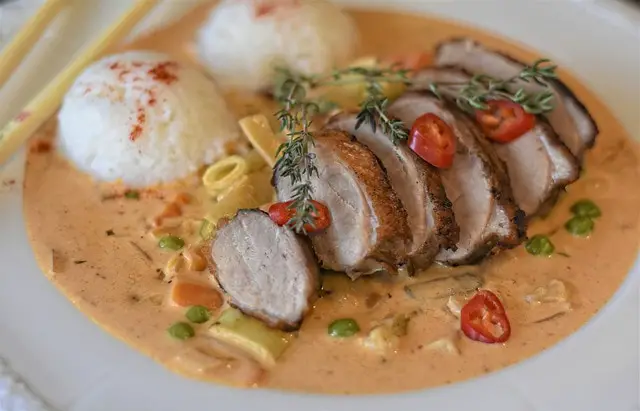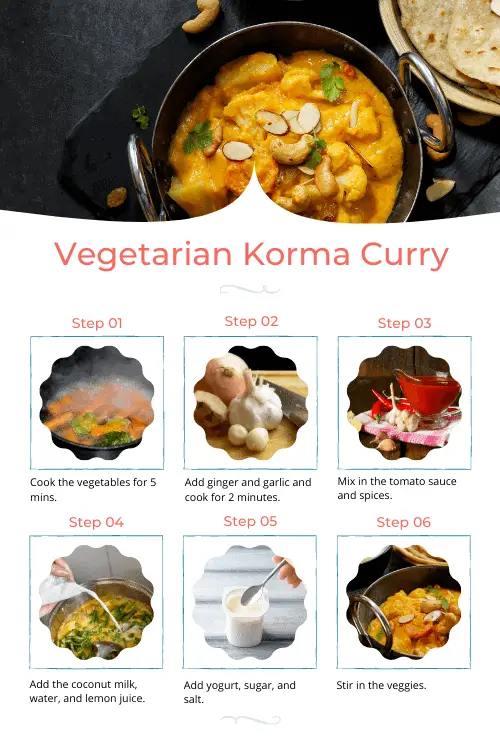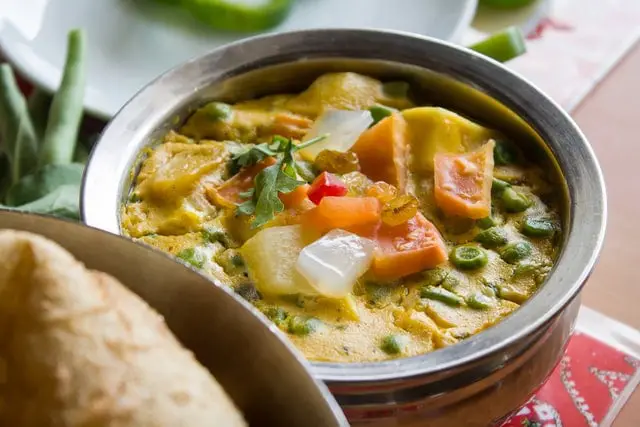
Did you know that coconut curry is actually a rather vague term?
This is because a number of countries throughout the world make some form of this dish.
However, there are some versions that are a little bit more popular than others.
If you want a little bit more insight into this dish as well as learn how to whip up some delicious options, start reading!
Table of Contents
If you think that you know about where coconut curry is made, you may want to do some fact checking.
While many people associate the dish with countries like Thailand and India, the truth is that it is a rather widespread and popular dish.
For instance, were you aware that these countries whipped up a similar dish?
Of course, you should be aware that the variation between these curries can often be great.
As such, you are unlikely to find two similar tasting curries in different countries.
Related Reading
Coconut Curry with Chicken: Your How-To Guide

Perhaps the most popular kind of coconut milk curry is the Thai curry.
Once again, though, this is a rather imprecise term.
This is because there are many kinds of curries in Thailand.
However, when most people think of this kind of curry, they are typically focusing on three most well-known curries:
The red curry hasn’t changed all that much over the years.
It gets its notable red curry due to the addition of up to 20 chilies.
However, some pastes will include tomato paste and chili powder instead.
What’s great about this curry is that it is incredibly versatile and can be used with a wide variety of ingredients.

Serves 2
Step 1: Make the Base
Heat a deep bottomed pan.
Add one cup of coconut milk and heat on low.
Add the red curry paste and stir well.
Cook until a thick curry forms.
Step 2: Add Sugar
Once the curry has achieved a certain level of thickness, add the sugar.
Stir well, making sure that it is dissolved and combined.
Step 3: Cook the Chicken
Add the chicken to the pan.
Mix the chicken in so that all the pieces are well coated with the curry.
Fry on medium heat until the meat is cooked through.
The pan should be dry and sticky.
Step 4: Add Coconut Milk
Add the rest of the coconut milk to the pan and stir well.
Add the salt and fish sauce. Stir until combined.
Bring to a boil.
Step 5: Add Chilies and Kaffir Lime Leaves
Add the chilies.
Tear out the center stem out of the kaffir lime leaves and add the leaves to the curry.
Stir all the ingredients.
Allow it to simmer for 2 to 3 minutes.
Take it off the heat.
Step 6: Add Basil
Once the curry has cooled for a few minutes, add the basil leaves.
Stir to combine.
Serve with rice.
This is one of the more popular curries in Thailand.
It is made up of herbs like cilantro, makrut lime peel, and basil as well as fresh green chilies, shallots, lemongrass, and other seasonings.
Here, too, the final curry is a combination of curry paste and coconut.
What gives this paste its color is the addition of turmeric.
Although this turmeric curry recipe may bear a resemblance to Indian curries, it holds its own with distinctively Thai flavors.
The paste also includes coriander seeds, lemongrass, cumin, galangal, and chilies.
There is a misconception that most Indian curries contain coconut milk – this isn’t actually the case.
You are more likely to find coconut milk used in South Indian dishes than North Indian.
North Indian curries tend to use yoghurt or ghee in their curries.
With South Indian curries, the curry powder and coconut milk are combined to produce a thick and flavorful dish.

Serves 4
Step 1: Boil Vegetables
If you are using vegetables like carrots, cauliflower, or beans, boil them now.
Veggies like bell pepper don’t need to be cooked for as long so you don’t need to boil them if you prefer a bit of crunch.
Bring a pot of water to a boil.
Add the vegetables.
Cook for 5 minutes
Step 2: Cook Onion, Garlic, Ginger
In a pan, add the vegetable oil and heat.
Adjust to medium heat. Add the onions and cook for 5 minutes or until softened.
Add ginger and garlic and cook for 2 minutes.
Step 3: Add Tomato Sauce and Spices
Add the tomato sauce and all the spices in at the stage.
Mix well.
Cook until spices are fragrant.
Step 4: Add Liquids
Add the coconut milk, water, and lemon juice to the pan.
Combine well.
Let the curry come to a boil.
Step 5: Add the Yogurt and Seasoning
Add yogurt, sugar, and salt.
Stir well.
Step 6: Add the Veggies
Stir in the veggies.
Cook until the vegetables have absorbed flavor.
Take off heat.
*Note: if you want to make this a vegan curry, omit the yogurt or use a vegan option such as coconut yogurt.

Here are a few tips for making the most out of your recipes with coconut milk.
First things first – to get any curry right, you need to be able to pick the best coconut milk for the dish.
So, you do need to be careful with your selection.
First, always choose full-fat coconut milk. This will provide the necessary flavor and creaminess.
Low fat options will simply water down the curries.
For added authenticity, particularly with Thai curries, you should select the best coconut milk for curry.
The key to a good Thai curry is the paste, of course.
Now, when you take a look at the many exotic ingredients involved in the process, you may think twice about making a homemade batch.
Well, don’t worry about it as you don’t really need to go through all that trouble.
Most experts agree that the store-bought version works just as well.
In fact, it may add a more potent taste to your curry.
When it comes to Indian curries, fresh is best.
So, whenever possible, choose the freshest option available to you.
If your local grocery store is lacking, head to an Asian food store – these tend to be stocked up rather well.
The other advantage to shopping at stores is that you get a more authentic taste as well.
This is how to make the best coconut curries. So, if you are in the mood for something spicy, flavorful, and wholesome you now know what to whip up.
If you enjoyed these recipes, make sure to head over to our Pinterest page. We have plenty of other coconut-based recipes for you to check out!
